Faunal response to sea-level and climate change in a short-lived seaway: Jurassic of the Western Interior, USA
- PMID: 28781385
- PMCID: PMC5518760
- DOI: 10.1111/pala.12278
Faunal response to sea-level and climate change in a short-lived seaway: Jurassic of the Western Interior, USA
Abstract
Understanding how regional ecosystems respond to sea-level and environmental perturbations is a main challenge in palaeoecology. Here we use quantitative abundance estimates, integrated within a sequence stratigraphic and environmental framework, to reconstruct benthic community changes through the 13 myr history of the Jurassic Sundance Seaway in the western United States. Sundance Seaway communities are notable for their low richness and high dominance relative to most areas globally in the Jurassic, and this probably reflects steep temperature and salinity gradients along the 2000 km length of the Seaway that hindered colonization of species from the open ocean. Ordination of samples shows a main turnover event at the Middle-Upper Jurassic transition, which coincided with a shift from carbonate to siliciclastic depositional systems in the Seaway, probably initiated by northward drift from subtropical latitudes to more humid temperate latitudes, and possibly global cooling. Turnover was not uniform across the onshore-offshore gradient, but was higher in offshore environments. The higher resilience of onshore communities to third-order sea-level fluctuations and to the change from a carbonate to a siliciclastic system was driven by a few abundant eurytopic species that persisted from the opening to the closing of the Seaway. Lower stability in offshore facies was instead controlled by the presence of more volatile stenotopic species. Such increased onshore stability in community composition contrasts with the well-documented onshore increase in taxonomic turnover rates, and this study underscores how ecological analyses of relative abundance may contrast with taxonomically based analyses. We also demonstrate the importance of a stratigraphic palaeobiological approach to reconstructing the links between environmental and faunal gradients, and how their evolution through time produces local stratigraphic changes in community composition.
Keywords: Jurassic; benthos; climate change; cooling event; sea level; stratigraphic palaeobiology.
Figures

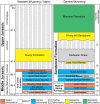

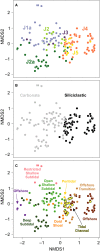
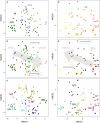
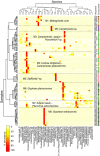
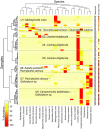


Similar articles
-
Onshore-offshore gradient in metacommunity turnover emerges only over macroevolutionary time-scales.Proc Biol Sci. 2014 Nov 22;281(1795):20141533. doi: 10.1098/rspb.2014.1533. Proc Biol Sci. 2014. PMID: 25297863 Free PMC article.
-
Palaeoenvironmental drivers of vertebrate community composition in the Belly River Group (Campanian) of Alberta, Canada, with implications for dinosaur biogeography.BMC Ecol. 2016 Nov 15;16(1):52. doi: 10.1186/s12898-016-0106-8. BMC Ecol. 2016. PMID: 27846871 Free PMC article.
-
Jurassic climate mode governed by ocean gateway.Nat Commun. 2015 Dec 11;6:10015. doi: 10.1038/ncomms10015. Nat Commun. 2015. PMID: 26658694 Free PMC article.
-
Faunal turnover of marine tetrapods during the Jurassic-Cretaceous transition.Biol Rev Camb Philos Soc. 2014 Feb;89(1):1-23. doi: 10.1111/brv.12038. Epub 2013 Apr 13. Biol Rev Camb Philos Soc. 2014. PMID: 23581455 Review.
-
Temporal change in deep-sea benthic ecosystems: a review of the evidence from recent time-series studies.Adv Mar Biol. 2010;58:1-95. doi: 10.1016/B978-0-12-381015-1.00001-0. Adv Mar Biol. 2010. PMID: 20959156 Review.
Cited by
-
Short-term paleogeographic reorganizations and climate events shaped diversification of North American freshwater gastropods over deep time.Sci Rep. 2022 Sep 16;12(1):15572. doi: 10.1038/s41598-022-19759-4. Sci Rep. 2022. PMID: 36114216 Free PMC article.
-
Resilient biotic response to long-term climate change in the Adriatic Sea.Glob Chang Biol. 2022 Jul;28(13):4041-4053. doi: 10.1111/gcb.16168. Epub 2022 Apr 12. Glob Chang Biol. 2022. PMID: 35411661 Free PMC article.
References
-
- Abdelhady, A. A. and Fürsich, F. T. 2014. Macroinvertebrate palaeo‐communities from the Jurassic succession of Gebel Maghara (Sinai, Egypt). Journal of African Earth Sciences, 97, 173–193.
-
- Alroy, J. 2010. Geographical, environmental and intrinsic biotic controls on Phanerozoic marine diversification. Palaeontology, 53, 1211–1235.
-
- Anderson, M. J. , Crist, T. O. , Chase, J. M. , Vellend, M. , Inouye, B. D. , Freestone, M. L. , Sanders, N. J. , Cornell, H. V. , Comita, L. S. , Davies, K. F. , Harrison, S. P. , Kraft, N. J. B. , Stegen, J. C. and Swenson, N. G. 2011. Navigating the multiple meanings of β diversity: a roadmap for the practicing ecologist. Ecology Letters, 14, 19–28. - PubMed
-
- Bambach, R. K. 1977. Species richness in marine benthic habitats through the Phanerozoic. Paleobiology, 3, 152–167.
-
- Behrensmeyer, A. K. , Todd, N. E. , Potts, R. and McBrinn, G. E. 1997. Late Pliocene faunal turnover in the Turkana Basin, Kenya and Ethiopia. Science, 278, 1589–1594. - PubMed
Associated data
LinkOut - more resources
Full Text Sources
Other Literature Sources

